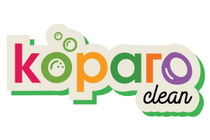
Can your dishwashing liquid hamper your health?
Toxic Residue on your Utensils
Doing the dishes is a never-ending task, we feel you. No matter how much you scrub away, the sink’s never empty, what kind of sorcery is THAT!
To be fair we are lucky to be living in the times of dishwashing liquid, they have made the task less messy. Not to forget the half-dissolved bar that would get stuck to the corners of your soap holder, and sometimes you’d even find the nasty surprise of a green mark under your steel bartans.
If anything at least those bars were honest when they remained on your dishes so at least you could scrub them away. Nowadays with liquid formulas, neon yellow, claiming to harness the power of 100 lemons, their residue may not be visible to you. And yes, even after a rinse residue may remain and absolutely nobody wants to add the extra seasoning of toxins to their dinner, no Sir!

Is your Dishwashing Liquid Toxic?
There is a strong link between what goes into dishwashing liquid and your gut health. Some of these chemicals might get left behind on your dishes, that are not visible to the naked eye, and there is a very good chance you’ll ingest them. One of these chemicals is a surfactant. A surfactant is a substance that is added to soaps to give them a boost in dealing with grease and grime. Your stomach and intestine both have a lining on the inside. Your stomach has a thick lining made of mucus to prevent hydrochloric acid - which helps in the breakdown of food - from harming the delicate surface of your stomach. There are concerns that strong & synthetic surfactants might harm this lining if they can cut across grease easily.
Now, this is something that might hamper your gut ecology.
There are a lot of complicated, tongue-twisting and complex ingredients in your dishwashing liquid. We’re here to breakdown some ingredients you ought to vary of -
1. Phosphates
This is a naturally occurring substance, however, when released into the environment in a concentrated form it can be very harmful. It is a water softening mineral and behaves like a fertilizer in water, which means it can cause algal growth in your drainage pipes and ultimately any water body it is let out in. Have you ever come across a water body-coloured green, well that’s due to eutrophication, excessive algal growth on the surface of the water? These blooms deplete the oxygen concentration in water, and no sunlight can penetrate the surface of the water, affecting underwater organisms. It has fatal consequences for marine life and ultimately humans too.
2. Tricolsan
Also known as the antibacterial and antifungal agent present in many consumer products, including toothpaste, soaps, detergents, toys, and surgical cleaning treatments. As of September 2016, United States Food and Drug Administration (FDA) banned the incorporation of triclosan and 18 other antimicrobial chemicals from household soap products, because of its toxic consequences. Triclosan’s direct exposure to the skin has been associated with some contact dermatitis and skin irritation reactions. It is also dangerous to our hormones and disrupts our body’s natural thyroid and endocrine systems.
3. Glycol Ethers:
Glycol Ethers comes in handy when soap and water just don’t work for a very greasy and grimy stain. But this can prove to be very deadly for you and your pet alike as it is the reason behind various birth defects, weight loss, eye, and skin irritation among other fatal diseases. This is an extremely common ingredient in a lot of commercial liquid soaps.
4. Phthalates
Used in most cleaning products as a binding agent, this worrisome chemical has been linked phthalates to asthma, breast cancer, obesity attention-deficit hyperactivity disorder, and type II diabetes, low IQ, neurodevelopmental issues, behavioural issues, autism spectrum disorders, altered reproductive development and male fertility issues.
-
Formaldehyde
This is a chemical compound that is used to preserve fish and is also shockingly found in a lot of cleaning products. It’s added to detergents along with preservatives so that over time it is slowly released as a preventative to bacterial contamination. However, concentrations of this chemical are toxic within the human body.

Fun Fact about Dishwashers:
Contemporary dishwashers use 1/10 water of an average hand wash: Recent varied reports state that hand washing your dishes consumes around 100 litres of water per cycle in an average home. Next time you’re thinking about doing a pre-rinse and pre-wash, think again about the water you could be wasting.
But this doesn’t mean you’ll be left with a pile of stinky dishes, there are a lot of highly effective alternatives you can opt for that do not have any of the above. Our Natural Dishwashing Liquid for one avoids all these ingredients and more. Furthermore, runoffs from this dishwashing product aren’t harmful to the environment at all and are safe for marine life because it is biodegradable and derived from natural ingredients. As for your gut ecology, the only surfactants that go into have been derived from coconut and sugarcane, so it ensures your gut remains happy. Additionally, there is no worry of any chlorine, phosphates, EDTA, or synthetic dyes.
We can’t guarantee your sink will be clear but we can promise that your dishes will be safe for you and the earth!









